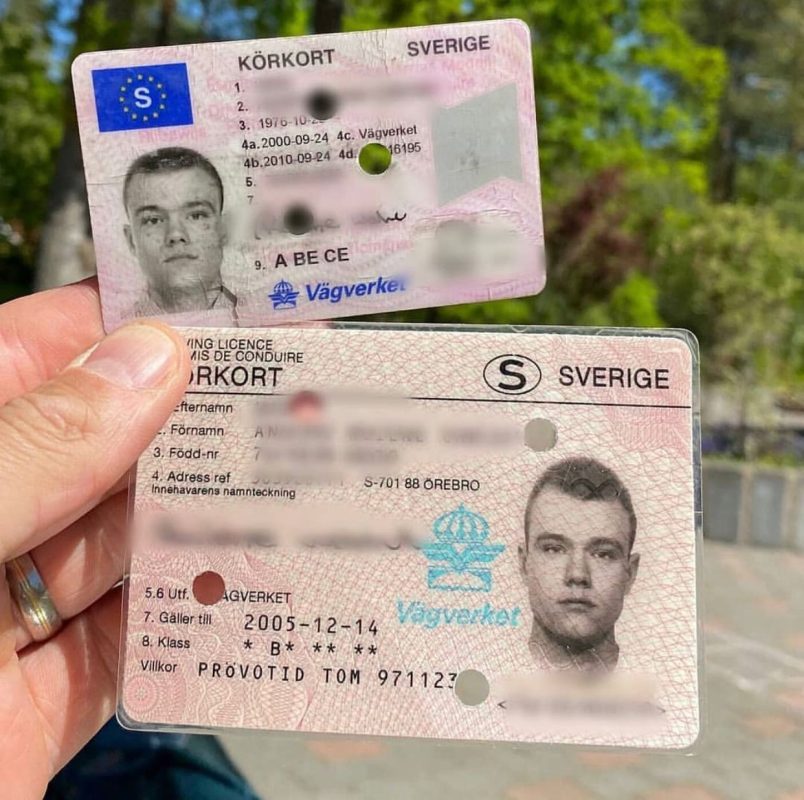
Internationellt Körkort Transportstyrelsen
Add a review FollowOverview
-
Founded Date 3 August 1945
-
Sectors Telecommunications
-
Posted Jobs 0
-
Viewed 6
Company Description
There’s A Reason Why The Most Common Driving License Id-Handling 2025 Debate Isn’t As Black And White As You Might Think
Navigating the New Landscape of Driving License ID Handling in 2025
In every society, the driving license functions as a crucial document, not simply as an evidence of the capability to operate a car but likewise as a recognition tool. As we step into 2025, substantial modifications have emerged concerning the handling and management of driving licenses, mainly affected by advances in technology, developing regulations, and the requirement for improved security measures. This post aims to deliver a comprehensive introduction of driving license ID managing in 2025, clarifying the technologies involved, the approaching legal changes, and offering answers to common questions.
The Transition to Digital Driving Licenses
One of the most notable improvements in driving license ID handling is the widespread adoption of digital driving licenses. These digital licenses are stored electronically on smartphones, providing several benefits to both drivers and authorities. In the United States, for example, lots of states have begun carrying out digital motorist’s licenses, while countries such as Canada and the UK are expected to follow fit soon.
Key Benefits of Digital Driving Licenses
- Convenience: Easily accessible on mobile phones, removing the need to bring physical copies.
- Enhanced Security: Incorporating biometric functions and file encryption helps to combat identity theft and scams.
- Real-time Updates: Immediate updates to personal information, such as changes in address or status, enhance precision.
Obstacles and Concerns
Regardless of the advantages, the shift to digital licenses presents challenges, including concerns about personal privacy, cybersecurity dangers, korkortonline and the digital divide impacting those without access to smartphones or the web.
Changes in Regulatory Framework
As we head into 2025, several policies surrounding driving licenses have come under scrutiny and change. Governments and regulative bodies are focusing on ensuring that driving licenses are protected, valid, and issued in compliance with recognized laws.
Secret Legislative Trends
-
Standardized ID Formats: Countries are moving towards a standardized format for driving licenses to simplify recognition and enhance security.
-
Increased Verification Procedures: Authorities are now employing sophisticated techniques such as facial acknowledgment and AI to boost verification procedures at checkpoints.
-
Concentrate on Sustainability: With growing ecological issues, numerous states are going with environment-friendly products for physical licenses and checking out robust digital options.
-
Age and Identity Verification: Enhanced procedures are being put in place to properly validate the age and identity of drivers, particularly in contexts where age-related laws use to driving.
The Global Perspective: State-By-State Comparison
| Country | Digital License Implementation | Current Regulations | Noteworthy Features |
|---|---|---|---|
| United States | A number of states in progress | Differs by state, efforts to unify formats | QR codes for simple validation |
| Canada | In pilot stages | Standardized recognition throughout provinces | Combination with health IDs |
| United Kingdom | Early adoption stage | Emphasis on online renewal and details updates | Digital confirmation by means of the app |
| Australia | Under consideration | Progressively rigid recognition procedures | Focus on scams avoidance |
The Role of Technology in ID Handling
Innovation is changing how driving licenses are dealt with. AI, blockchain, and biometrics are ending up being important to driving license issuance and confirmation.
Developments Shaping the Future
-
Synthetic Intelligence: AI algorithms are now utilized for acknowledging patterns in driving habits, which can notify insurance premiums and legal implications.
-
Blockchain Technology: Ensuring the integrity and authenticity of driving license information, blockchain technology permits protected sharing of details between authorities without worry of tampering.
-
Biometrics: Increasingly, biometric systems are executed at the point of issuance and verification, such as facial acknowledgment and fingerprint scanners, to make sure safe identity verification.
Potential Impacts of Emerging Technologies
The application of these technologies can result in enhanced dependability and security of driving IDs, however it raises questions about information personal privacy and user consent.
Often Asked Questions (FAQs)
1. What should I do if my digital driving license is lost or taken?
You must right away report the loss or theft to your local automobile agency. The majority of digital licenses have integrated features to disable access from another location.
2. Are digital driving licenses accepted all over?
Since 2025, approval of digital licenses varies by area. It’s advised to carry both digital and physical copies when taking a trip across state or national borders.
3. Can I update my information on a digital driving license?
Yes, updates can typically be made through the associated mobile application or site of the releasing authority.

4. What are the security steps for digital licenses?
Digital licenses generally incorporate functions such as encryption, two-factor authentication, and biometric verification to improve security.
5. How will traditional driving licenses be impacted?
The move towards digital licenses may reduce the issuance of physical licenses, but they will still be offered for those unable to gain access to digital alternatives.
As we advance into a brand-new age in 2025, the handling of driving licenses is optimizing to satisfy the needs of modern society. Through technological developments and regulatory reforms, people can expect a more protected, efficient, and streamlined procedure for getting and managing their driving licenses. However, as digital solutions multiply, it stays vital to address obstacles associating with personal privacy, security, and accessibility, making sure equitable roadway gain access to for all drivers while securing personal information. As governments throughout the globe continue to adjust to these modifications, the future of driving license ID handling is set to be both vibrant and transformative.

